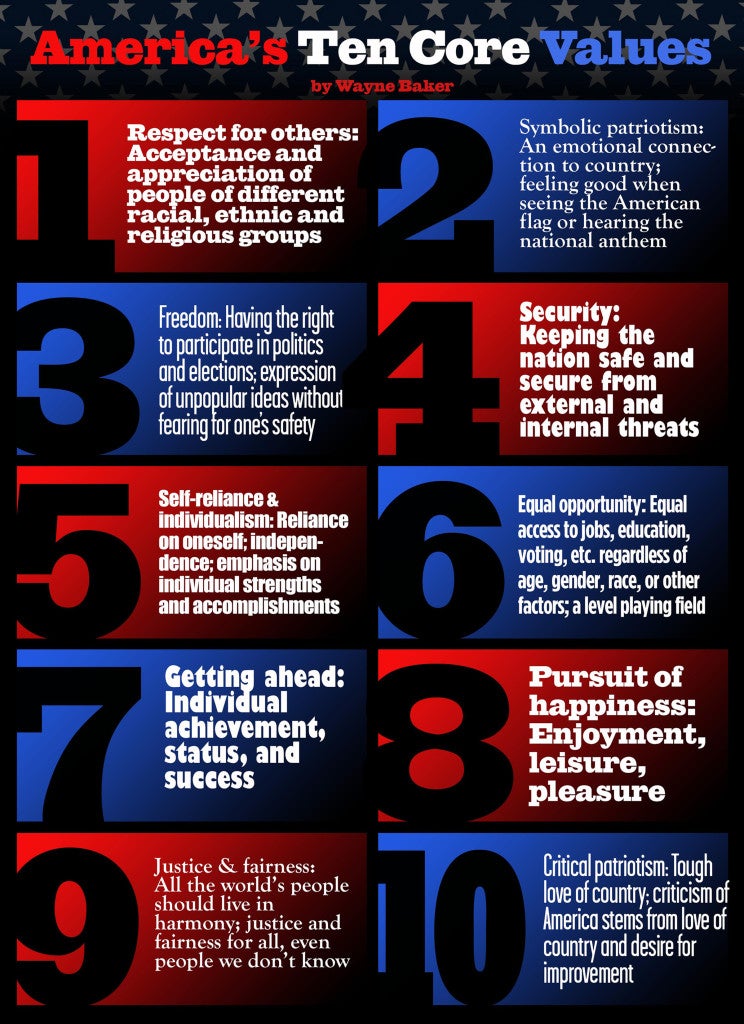Originally published on OurValues.Org
WHENEVER the president delivers his State of the Union address, one thing we’re sure to see is a display of American symbols—the flag aplenty, the elaborate protocol of the president’s invitation and entry into the House of Representatives, and more.
How do you feel when you see these American symbols and rituals? Does seeing “Old Glory” stir your blood? Does hearing the national anthem do the same? Almost all Americans have positive feelings when they see the flag or hear the anthem. This is an emotional connection to country, a form of patriotism, and it is one of the 10 core values I document in my new book, United America.

In an interview, I describe how this new book was developed and the vital role OurValues.org played in my research on civil dialogue.
Core Value 2: “Symbolic patriotism”—as we say in the chart of values, this one means “An emotional connection to country; feeling good when seeing the American flag or hearing the national anthem.”
Love of American symbols is one way that Americans feel connected to one another in our vast, diverse, multicultural society. And, it’s a rather unique form of patriotism. Foreign visitors are often struck (and puzzled) by how often they see American symbols. The French intellectual Bernard-Henri Levy observed this when he followed in the footsteps of his countryman, Alexis de Tocqueville. In an article published in The Atlantic, he said:
“One is struck by the omnipresence of the Star-Spangled Banner, even on the T-shirts of the kids who come to watch the sumo wrestlers as the little crowd cheers them on. It’s the flag of the American cavalry in westerns. It’s the flag of Frank Capra movies. It’s the fetish that is there, in the frame, every time the American president appears.”
So, what is the state of our union and how does it resonate with our patriotic symbols? Obama presented his version in the 2014 State of the Union address. Gallup presents its own “Stats of the Union,” timed to coincide with the presidential event. In it, Gallup shows that most indicators are better now than they were in 2009. For example, more people are satisfied with the way things are going and are more confident in the economy. More people say they are “thriving” now than in 2009. Fewer are worrying a lot. The most important problem now is the “government,” while the most important problem in 2009 was the “economy.”
Do you love American symbols?
What is the State or Stats of the Union for you?
Dr. Wayne Baker is Chair of the Management & Organizations area at the University of Michigan Ross School of Business, Robert P. Thome Professor of Business Administration, and Professor of Management & Organizations. He also holds appointments with the Department of Sociology and the Institute for Social Research. He has published over sixty academic articles and five books, including America’s Crisis of Values: Reality and Perception (Princeton University Press) and United America: the Surprising truth about American Values… He blogs five days a week at www.OurValues.org, an online experiment in civil dialogue.
Originally published on OurValues.org.


